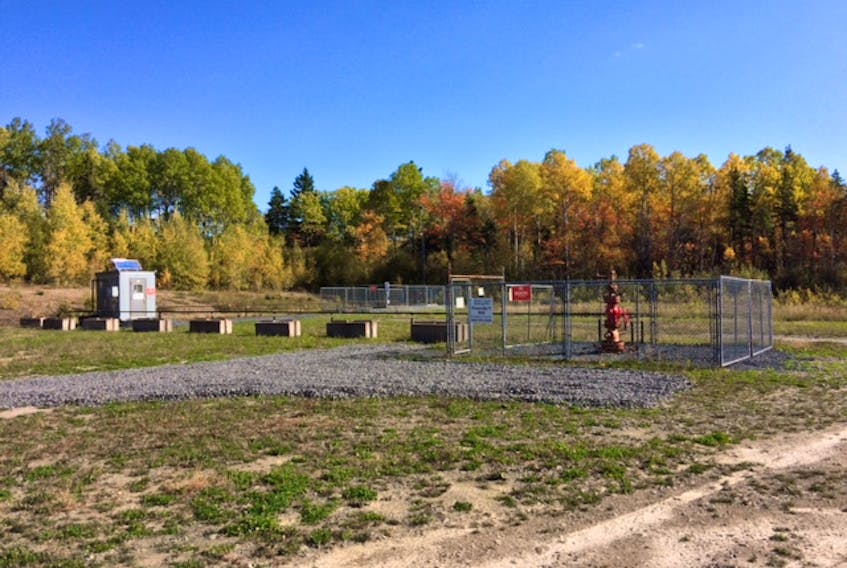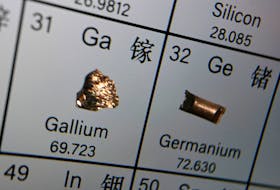PICTOU COUNTY - For the average Canadian, Nova Scotia may not be the first province that comes to mind regarding the future of natural gas given the strong oil and gas industry and Western Canada.
However, companies looking to produce and provide natural gas are at work in Nova Scotia – and close to home in Pictou County, no less.
Several offshore gas developments are still in place just off the coast. Michael Bird, engineer in petroleum operations with the Department of Energy, said there is limited offshore activity in Nova Scotia, with the Sable Offshore Energy project and Encana’s Deep Panuke project, on the Scotia Shelf near the Eastern Shore.
There are some upcoming offshore projects planned, such as a seismic program by Statoil, and plans by British Petroleum (BP) to drill offshore in 2018. Shell currently holds six deep-water exploration licences.
“We know we have large amounts of gas offshore, but the problem is how economically challenging it is in the domestic market,” said Bird. “The price (of the gas) would be too low to justify the costs of major offshore gas developments.”
In Pictou County East Coast Energy Inc. is looking to bypass the high costs of offshore development, working to secure a source of onshore natural gas.
East Coast Energy is currently testing a coal gas supply (coalbed methane) near Stellarton, and has signed a production agreement with the province for approximately 9,031 hectares (22,578 acres) in the Pictou Coalfield.
Patience is the word for East Coast Energy, said CEO and president Julie Cohen, who wants to develop the project to collaborate with Heritage Gas to eventually serving local demand.
East Coast Energy has recently signed a memorandum of understanding (MOU) with Heritage Gas to discuss an agreement for a local supply of natural gas from the gas-rich coalbed supply in Stellarton, located in the Pictou Coalfield.
Both companies are looking at exploring all options for securing low-cost natural gas.
If fully developed, the gas in the Pictou Coalfield could meet local demand for natural gas for two decades, noted Cohen. East Coast Energy has discovered 426 billion cubic feet of gas in the Pictou Coalfield.
So far, the project has entailed the drilling of two wells and the acquisition of rights for a few older wells, for the purpose of exploration.
“They did work testing coal, trying to see what the resource potential is,” said Bird.
“They haven’t produced anything marketable yet, but they are still testing the coal.”
Pictou County Chamber of Commerce executive director Jack Kyte said East Coast Energy should be given credit for its persistence in trying to develop the resource.
“It takes the right people, and it’s fortunate East Coast Energy is trying to do this the right way,” said Kyte. “There’s a great deal of potential, and I’m anxious to see it come to fruition.”
Part of the reason development is going at a more modest pace compared to jurisdictions with more extensive natural gas activity is that any developments relating to natural resources are thoroughly regulated in Nova Scotia. Cohen noted East Coast Energy is taking specific care to operate within the framework of those regulations.
In addition to provincial regulations, the process of even testing for natural gas is complicated by the fact that companies like East Coast Energy need to bring equipment and professionals in from other provinces, where the natural gas industry is more active.
Cohen sees onshore options for natural gas as the necessary next step, given that offshore supplies are beginning to dwindle and have high associated costs.
Cohen said she sees East Coast Energy as fortunate for having records of past natural gas activity in Nova Scotia. Other companies have sought supplies of natural gas in the province, only to later fold.
Cohen noted that having access to records of what worked – and what didn’t – for previous companies helped her learn from previous mistakes and take the necessary steps to begin testing at the Pictou Coalfield.
The work in the Pictou Coalfield began when East Coast Energy drilled two wells in 2013 in the area – one of which was the first successful horizontal well in the Stellarton basin of the Pictou Coalfield. In March 2016, gas from one of the wells met pipeline specifications. Flow testing is underway on the second well.
Although East Coast Energy wasn’t the first company to drill a horizontal well in Nova Scotia, theirs is the first horizontal well operating in Pictou County.
Information from East Coast Energy said projects such as the one at the Pictou Coalfield will provide benefits of direct and indirect jobs, and investments to the area.
The work in the Pictou Coalfield will also potentially provide an economic boon to Nova Scotia, stated a release from East Coast Energy, alluding to a five per cent royalty regime in place for unconventional onshore gas production within the province.
Another blessing for the project is its location in the Pictou Coalfield: less than three km from the Heritage Gas Pipeline.
Heritage Gas specializes in distribution in Nova Scotia, and Cohen hopes to be able work with that company when the project progresses.
“We are not in the distribution business,” Cohen said. “Our specialty is to extract.”
Heritage Gas provides service to over 6,000 customers in Halifax, Pictou, Amherst and Oxford – Bird noted there is growth expected if there are developments in the Pictou Coalfield. Heritage Gas is owned by AltaGas Ltd., based in Calgary.
Looking forward, Cohen expressed the belief that there will be a continued demand for natural gas for the next 30 to 40 years, since natural gas is a transitional fuel – even as businesses and municipalities move away from traditional fossil fuels as a source of energy.
“Natural gas will continue to have a role to play, especially in moving away from more carbon-intensive fuels. I think that along with cleaning up the electricity grid, natural gas will continue to have a role to play,” said Bird. “Part of what we’re doing is making sure we can have long-term stable prices for natural gas access in this province.”
East Coast Energy, Bear Head, Goldboro and Alton all have projects underway that are in the best interests of Nova Scotians. pic.twitter.com/doceAC6zdX
— Department of Energy (@NS_Energy) October 20, 2017
There are also two major liquefied natural gas export projects in Nova Scotia – Goldboro LNG, and Bear Head LNG.
Bird said both focus on taking large amounts of natural gas, liquefying it and exporting to lucrative international markets – typically Europe or Asia, where there is a greater demand.
Natural gas development in the province is not without controversy. Recently, the Indian Brook band appealed in the Supreme Court against Alton Natural Gas Inc.’s plans to flush salt out of caverns near the Shubenacadie River to use to store natural gas.
The band was awarded $75,000 in court costs, after a provincial Supreme Court judge deemed it unfair that the province rejected Indian Brook’s request for a review of the plan.
Indian Brook contends that Alton Natural Gas Storage’s plans would create an environmental risk to the Shubenacadie River.
In the Stellarton and New Glasgow area, researchers from several universities in the Maritimes are studying methane emissions in close proximity to historically developed coalmines. This is being done through a Gas Seepage Project, measuring atmospheric, groundwater and soil gas levels near areas formerly mined.
This is part of a larger federal initiative to cut methane emissions. Since methane occurs naturally in coal, gas seepages from historical mines that weren’t cut according to current environmental guidelines are potential emitters.
By 2025, Canada hopes to reduce methane emissions from the oil and gas sector by 40 to 45 per cent below 2012 levels.









